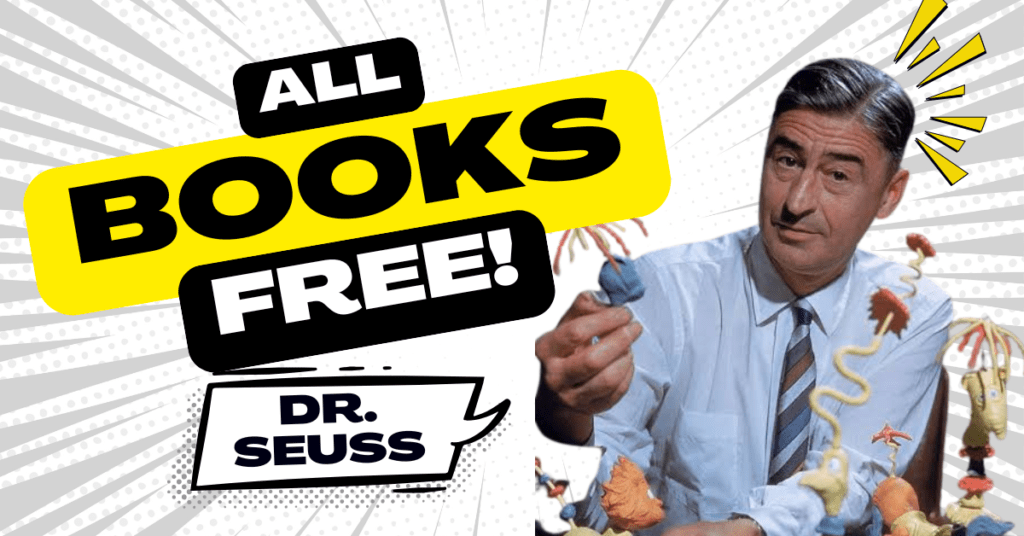Introduction
Step into the whimsical world of rhymes, imagination, and life lessons with Dr. Seuss! 🎩📚 From the Cat in the Hat to the Grinch, these beloved characters have captivated generations of readers, young and old alike. But have you ever wondered about the magic behind these colorful pages? – Dr Seuss Books
Dr. Seuss books are more than just entertaining stories; they’re gateways to learning, creativity, and personal growth. However, recent controversies have cast a shadow on some of his works, leaving parents and educators puzzled. 🤔 Is it time to reassess the role of these classic tales in our children’s lives?
In this blog post, we’ll dive deep into the enchanting universe of Dr. Seuss, exploring his most popular books, their educational value, and the lasting impact on children’s literature. We’ll also address the recent debates surrounding some of his works, helping you navigate this complex landscape. So, grab your thinking cap and join us on this fascinating journey through the ups and downs of Dr. Seuss’s literary legacy!

The Magical World of Dr. Seuss
Exploring the unique storytelling style
Dr. Seuss, born Theodor Seuss Geisel, revolutionized children’s literature with his distinctive storytelling style. His books are characterized by their rhythmic patterns, clever rhymes, and inventive wordplay that make them both entertaining and educational. Dr. Seuss often employed anapestic tetrameter, a poetic meter that creates a bouncy, sing-song quality perfect for reading aloud.
One of the most remarkable aspects of Dr. Seuss’s storytelling is his ability to convey complex ideas through simple language. For example, “The Lorax” tackles environmental issues, while “Horton Hears a Who!” explores themes of equality and standing up for others. This combination of accessibility and depth makes his books appealing to both children and adults.
Iconic characters that captivate readers
Dr. Seuss created a cast of unforgettable characters that have become cultural icons. From the mischievous Cat in the Hat to the grumpy Grinch, these characters resonate with readers of all ages. Here’s a list of some of the most beloved Dr. Seuss characters:
- The Cat in the Hat
- The Grinch
- Horton the Elephant
- Sam-I-Am
- The Lorax
- Thing One and Thing Two
These characters often embody relatable traits or emotions, allowing young readers to connect with them on a personal level. For instance, the Grinch’s journey from grumpiness to kindness teaches valuable lessons about empathy and personal growth.
Whimsical illustrations that bring stories to life
Dr. Seuss’s illustrations are as iconic as his stories. His unique visual style features bold lines, vibrant colors, and fantastical creatures that perfectly complement the whimsical nature of his narratives. The illustrations not only enhance the storytelling but also stimulate children’s imaginations and creativity.
Here’s a comparison of Dr. Seuss’s illustration style with traditional children’s book illustrations:
| Aspect | Dr. Seuss Style | Traditional Style |
| Colors | Bold, vibrant | Often muted, realistic |
| Lines | Exaggerated, curvy | Typically straight, precise |
| Characters | Fantastical, unique | More realistic, familiar |
| Backgrounds | Imaginative, surreal | Often realistic settings |
Dr. Seuss’s illustrations often feature impossible architecture, bizarre creatures, and exaggerated proportions that challenge readers’ perceptions of reality. This visual playfulness encourages children to think outside the box and embrace creativity in their own lives.
The combination of Dr. Seuss’s unique storytelling style, memorable characters, and captivating illustrations creates a magical world that has enchanted generations of readers. His books continue to be beloved classics, inspiring young minds and fostering a love for reading that often lasts a lifetime. As we delve deeper into the world of Dr. Seuss, we’ll explore some of his most popular books and their enduring impact on children’s literature.
Most Popular Dr. Seuss Books
“The Cat in the Hat”: A mischievous adventure
Dr. Seuss’s “The Cat in the Hat” is undoubtedly one of the most beloved children’s books of all time. Published in 1957, this whimsical tale introduces readers to the iconic Cat in the Hat, who brings chaos and excitement to a dreary, rainy day. The book’s simple yet engaging storyline, coupled with Seuss’s signature rhyming style, has captivated generations of young readers.
Key features of “The Cat in the Hat”:
- Easy-to-read vocabulary for beginning readers
- Vibrant illustrations that bring the story to life
- A mischievous protagonist that children adore
- A subtle message about responsibility and consequences
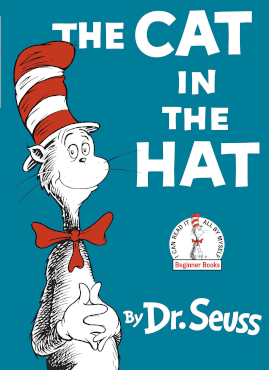
“Green Eggs and Ham”: A lesson in trying new things
Another classic in the Dr. Seuss collection, “Green Eggs and Ham” was published in 1960 and quickly became a favorite among children and adults alike. This book teaches an important lesson about being open-minded and willing to try new experiences, all while using only 50 unique words.
| Book Feature | Description |
| Word count | 50 unique words |
| Main characters | Sam-I-Am and the unnamed protagonist |
| Key message | Embracing new experiences |
| Reading level | Beginner |
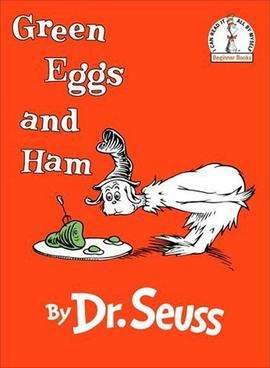
“Oh, the Places You’ll Go!”: Inspiration for all ages
Published in 1990, “Oh, the Places You’ll Go!” was the last book released during Dr. Seuss’s lifetime. This inspirational tale has become a popular gift for graduates and anyone embarking on a new journey in life. The book’s timeless message of perseverance and self-belief resonates with readers of all ages.
Notable aspects of “Oh, the Places You’ll Go!”:
- Encourages readers to embrace life’s challenges
- Addresses both successes and setbacks
- Features Seuss’s signature rhyming style and colorful illustrations
- Offers wisdom applicable to various life stages
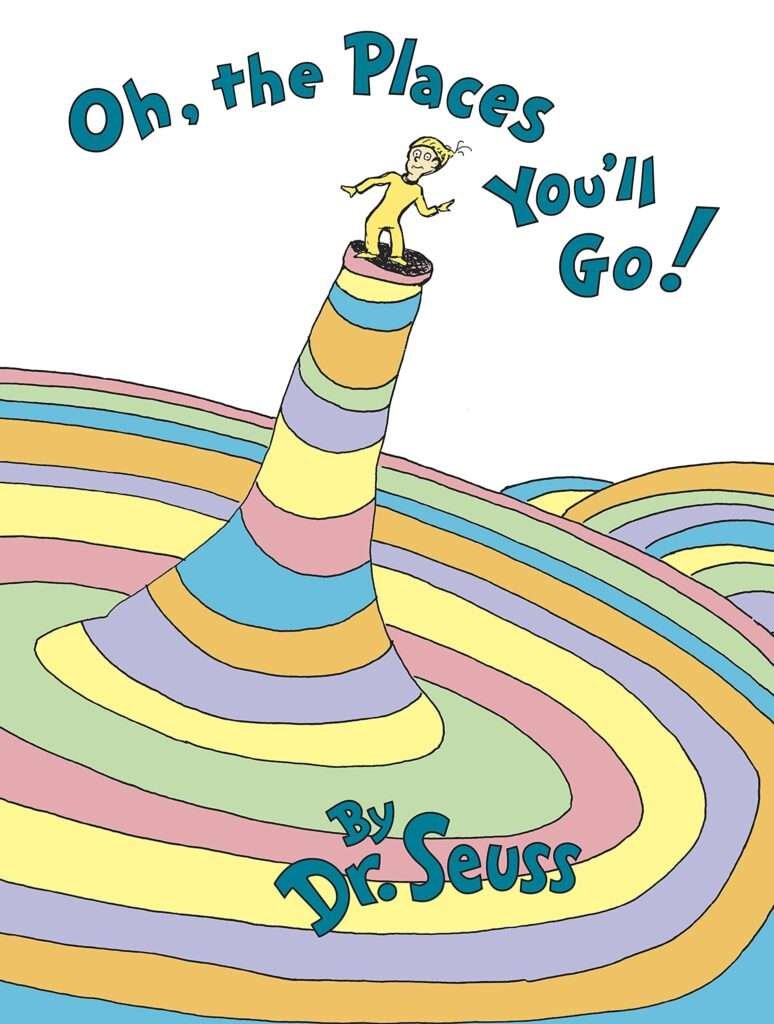
“How the Grinch Stole Christmas!”: A holiday classic
First published in 1957, “How the Grinch Stole Christmas!” has become an essential part of holiday traditions for many families. This heartwarming tale teaches readers about the true meaning of Christmas and the power of kindness and community.
The enduring popularity of “How the Grinch Stole Christmas!” can be attributed to:
- Its memorable protagonist, the Grinch
- The charming depiction of the Whos and Whoville
- A powerful message about the spirit of giving
- Iconic illustrations that have inspired numerous adaptations
These four books represent some of Dr. Seuss’s most popular and enduring works. Each offers a unique blend of imaginative storytelling, clever wordplay, and important life lessons that continue to captivate readers of all ages. Now that we’ve explored these beloved classics, let’s delve into the educational value of Dr. Seuss books and how they contribute to children’s learning and development.
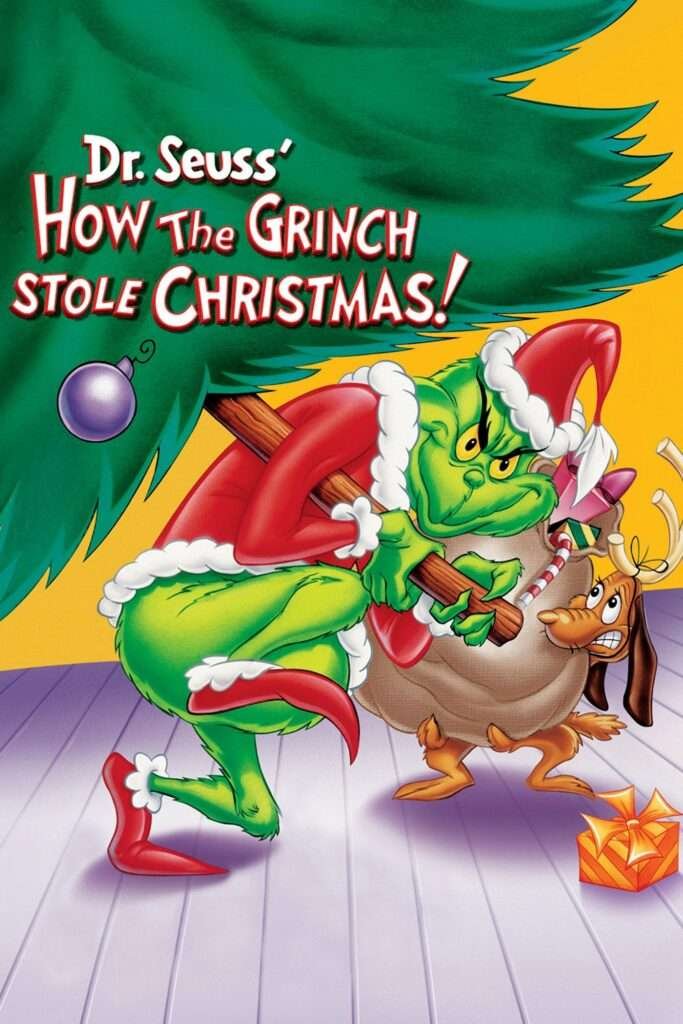
Educational Value of Dr. Seuss Books
Enhancing early literacy skills
Dr. Seuss books are renowned for their ability to enhance early literacy skills in young readers. Through their unique combination of rhyme, rhythm, and repetition, these books provide an excellent foundation for language development. Let’s explore how Dr. Seuss books contribute to various literacy skills:
- Phonological Awareness
- Vocabulary Expansion
- Reading Fluency
- Comprehension Skills
| Literacy Skill | Dr. Seuss Technique | Example Book |
| Phonological Awareness | Rhyming words | “The Cat in the Hat” |
| Vocabulary Expansion | Nonsense words | “Oh, the Thinks You Can Think!” |
| Reading Fluency | Repetitive phrases | “Green Eggs and Ham” |
| Comprehension Skills | Story structure | “Horton Hears a Who!” |
Dr. Seuss’s clever use of language not only makes reading fun but also helps children recognize patterns in words and sounds, a crucial step in developing reading proficiency.
Teaching important life lessons
Beyond their linguistic value, Dr. Seuss books are treasure troves of important life lessons. These stories often tackle complex issues in a way that’s accessible and engaging for young minds. Some key lessons include:
- Perseverance (“Oh, the Places You’ll Go!”)
- Environmental conservation (“The Lorax”)
- Inclusivity and acceptance (“Horton Hears a Who!”)
- Standing up for oneself (“Yertle the Turtle”)
These books provide parents and educators with excellent tools to discuss important values and social issues with children. The whimsical characters and fantastical scenarios create a safe space for exploring these concepts without being overly didactic.
Encouraging creativity and imagination
One of the most significant educational values of Dr. Seuss books lies in their ability to spark creativity and fuel imagination. The quirky illustrations and inventive storylines encourage children to think outside the box and envision new possibilities. Here’s how Dr. Seuss books foster creativity:
- Unique character designs inspire artistic expression
- Nonsensical words promote linguistic playfulness
- Fantastical scenarios encourage problem-solving skills
- Open-ended stories invite readers to imagine alternative endings
By immersing children in these vibrant, imaginative worlds, Dr. Seuss books help develop critical thinking skills and encourage innovative thought processes. This creativity can extend beyond reading, influencing a child’s approach to art, writing, and even problem-solving in daily life.
As we’ve seen, Dr. Seuss books offer a wealth of educational value, from building fundamental literacy skills to imparting important life lessons and nurturing creativity. These timeless stories continue to captivate young readers, making learning an enjoyable and memorable experience. With such a strong foundation in early education, it’s no wonder that Dr. Seuss has had a lasting impact on children’s literature, which we’ll explore in the next section.
Controversial Dr. Seuss Books
Addressing racial stereotypes in earlier works
While Dr. Seuss’s books have been beloved by generations, some of his earlier works have come under scrutiny for containing racial stereotypes. These depictions, while reflective of the era in which they were created, are now recognized as offensive and harmful.
Some examples of problematic content include:
- Stereotypical depictions of African characters in “If I Ran the Zoo”
- Caricatures of Asian individuals in “And to Think That I Saw It on Mulberry Street”
- Depictions of Middle Eastern characters in “On Beyond Zebra!”
It’s important to note that these stereotypes were not uncommon in children’s literature of the time, but that doesn’t excuse their impact on readers, especially children from marginalized communities.
The decision to cease publication of certain titles
In March 2021, Dr. Seuss Enterprises made the significant decision to cease publication of six titles due to their racist and insensitive imagery. This decision was not taken lightly and came after months of discussion and consultation with experts in the field of children’s literature and diversity.
The books that were discontinued include:
- “And to Think That I Saw It on Mulberry Street”
- “If I Ran the Zoo”
- “McElligot’s Pool”
- “On Beyond Zebra!”
- “Scrambled Eggs Super!”
- “The Cat’s Quizzer”
This decision sparked a heated debate about censorship, cancel culture, and the preservation of literary history. However, Dr. Seuss Enterprises maintained that this move was part of their commitment to support all children and families with messages of hope, inspiration, and inclusion.
| Book Title | Year Published | Reason for Discontinuation |
| And to Think That I Saw It on Mulberry Street | 1937 | Stereotypical depiction of an Asian man |
| If I Ran the Zoo | 1950 | Caricatures of African and Asian individuals |
| McElligot’s Pool | 1947 | Stereotypical depiction of a “Eskimo fish” |
| On Beyond Zebra! | 1955 | Stereotypical depiction of a person wearing a turban |
| Scrambled Eggs Super! | 1953 | Stereotypical depictions of Arabian and African characters |
| The Cat’s Quizzer | 1976 | Stereotypical depiction of a Japanese character |
Impact on Dr. Seuss’s legacy | Dr Seuss Books
The controversy surrounding these books has undoubtedly impacted Dr. Seuss’s legacy, but it’s important to consider this impact in its full context. On one hand, the decision to cease publication of certain titles has led to increased awareness of the problematic elements in some of his works. This has sparked important conversations about representation in children’s literature and the responsibility of publishers to evolve with changing societal norms.
On the other hand, Dr. Seuss’s overall contribution to children’s literature remains significant and widely celebrated. Many of his books continue to be beloved by children and adults alike, promoting imagination, creativity, and important life lessons. The controversy has not diminished the enduring popularity of classics like “Green Eggs and Ham,” “The Cat in the Hat,” and “Oh, the Places You’ll Go!”
This situation highlights the complexity of evaluating historical works through a modern lens. It reminds us that even beloved authors and their works can be flawed, and that it’s possible to acknowledge these flaws while still appreciating the positive aspects of their legacy.
As we move forward, it’s crucial to use this controversy as a learning opportunity. It underscores the importance of diverse representation in children’s literature and the need for ongoing evaluation of the messages we’re sending to young readers. The Dr. Seuss controversy serves as a catalyst for positive change in the world of children’s publishing, encouraging more inclusive and respectful storytelling for future generations.
Dr. Seuss’s Influence on Children’s Literature | Dr Seuss Books
Revolutionizing the easy-reader format | Dr Seuss Books
Dr. Seuss’s impact on children’s literature is immeasurable, particularly in his revolutionary approach to the easy-reader format. His unique style, characterized by simple vocabulary, rhyming text, and whimsical illustrations, transformed the way children learn to read. Books like “The Cat in the Hat” and “Green Eggs and Ham” were specifically designed to engage young readers while using a limited vocabulary, making them accessible and enjoyable.
| Feature | Traditional Easy Readers | Dr. Seuss’s Approach |
| Vocabulary | Limited, often dull | Limited, but creative and fun |
| Illustrations | Basic, realistic | Imaginative, colorful |
| Narrative | Simple, straightforward | Engaging, often nonsensical |
| Word repetition | Mechanical | Clever, rhythmic |
This innovative approach not only made reading more enjoyable for children but also helped them develop crucial literacy skills in a fun and engaging way.
Inspiring generations of authors and illustrators | Dr Seuss Books
Dr. Seuss’s unique style has inspired countless authors and illustrators in the field of children’s literature. His influence can be seen in:
- Use of rhyme and rhythm in storytelling
- Creation of fantastical creatures and worlds
- Incorporation of subtle moral lessons in entertaining stories
- Bold, distinctive illustration styles
Many contemporary children’s book creators, such as Mo Willems and Oliver Jeffers, have cited Dr. Seuss as a significant influence on their work. His legacy continues to shape the landscape of children’s literature, encouraging creativity and imagination in both storytelling and visual art.
Enduring popularity in the digital age | Dr Seuss Books
Despite the rise of digital media, Dr. Seuss’s books have maintained their popularity and relevance. This enduring appeal can be attributed to several factors:
- Timeless themes and messages
- Universal appeal across generations
- Adaptability to various formats
In the digital age, Dr. Seuss’s works have successfully transitioned to new platforms:
- E-books and interactive digital versions of classic titles
- Mobile apps featuring beloved characters and stories
- Animated adaptations on streaming platforms
- Online resources for educators and parents
This adaptability has allowed Dr. Seuss’s books to reach new audiences while maintaining their core appeal. The digital versions often enhance the reading experience with interactive elements, sound effects, and read-along features, further engaging young readers.
Moreover, the enduring popularity of Dr. Seuss books has led to their continued use in educational settings. Many schools and literacy programs still rely on these beloved stories to introduce children to the joys of reading and to teach important language skills.
As we move forward, it’s clear that Dr. Seuss’s influence on children’s literature remains strong, adapting to new technologies while preserving the timeless charm that has captivated readers for generations. This lasting impact underscores the importance of examining both the popular and controversial aspects of his work, which we’ll explore in the next section.
Conclusion | Dr Seuss Books
Dr. Seuss’s books have left an indelible mark on children’s literature, captivating readers for generations with their whimsical characters, imaginative stories, and playful rhymes. As we’ve explored throughout this post, the impact of these beloved books extends far beyond mere entertainment.
The Enduring Legacy of Dr. Seuss | Dr Seuss Books
Dr. Seuss’s works continue to enchant readers of all ages, from toddlers to adults. Their timeless appeal lies in their ability to:
- Spark imagination and creativity
- Teach valuable life lessons in a fun, accessible way
- Encourage a love for reading from an early age
- Address complex topics with simplicity and humor
A Diverse Collection for Every Reader | Dr Seuss Books
The extensive Dr. Seuss collection offers something for everyone:
| Age Group | Popular Titles |
| Toddlers | “Green Eggs and Ham”, “The Cat in the Hat” |
| Early Readers | “One Fish, Two Fish, Red Fish, Blue Fish”, “Hop on Pop” |
| Older Children | “Oh, the Places You’ll Go!”, “The Lorax” |
| Adults | “You’re Only Old Once!”, “Oh, the Thinks You Can Think!” |
Educational Value and Literary Significance | Dr Seuss Books
Dr. Seuss books are more than just entertaining stories; they are valuable educational tools that:
- Enhance vocabulary and language skills
- Promote phonemic awareness and reading fluency
- Introduce important concepts like environmental conservation and social responsibility
- Encourage critical thinking and problem-solving
Embracing the Controversy | Dr Seuss Books
While some Dr. Seuss books have faced criticism in recent years, it’s important to:
- Acknowledge the historical context in which they were written
- Use these controversies as opportunities for meaningful discussions about diversity and inclusivity
- Appreciate the positive messages and enduring value of the majority of his works
Dr. Seuss’s books remain a cornerstone of children’s literature, bridging generations and cultures with their universal themes and unforgettable characters. Whether read aloud, enjoyed silently, or adapted into movies, these stories continue to inspire, educate, and entertain readers worldwide. As we move forward, let’s celebrate the positive impact of Dr. Seuss’s works while also embracing the ongoing conversations they inspire about representation and inclusivity in children’s literature.
Dr. Seuss books have captivated readers of all ages for generations, offering a magical world filled with whimsical characters and imaginative storytelling. From beloved classics to educational tales, these books have left an indelible mark on children’s literature. While some works have faced controversy, the overall impact of Dr. Seuss’s creations remains undeniably positive.
As we reflect on the enduring legacy of Dr. Seuss, it’s clear that his books continue to inspire creativity, foster a love for reading, and impart valuable life lessons. Whether you’re revisiting childhood favorites or introducing these timeless stories to a new generation, Dr. Seuss books remain a treasure trove of entertainment and wisdom that will undoubtedly continue to delight readers for years to come.
Check Out The Sources
Check Out More

